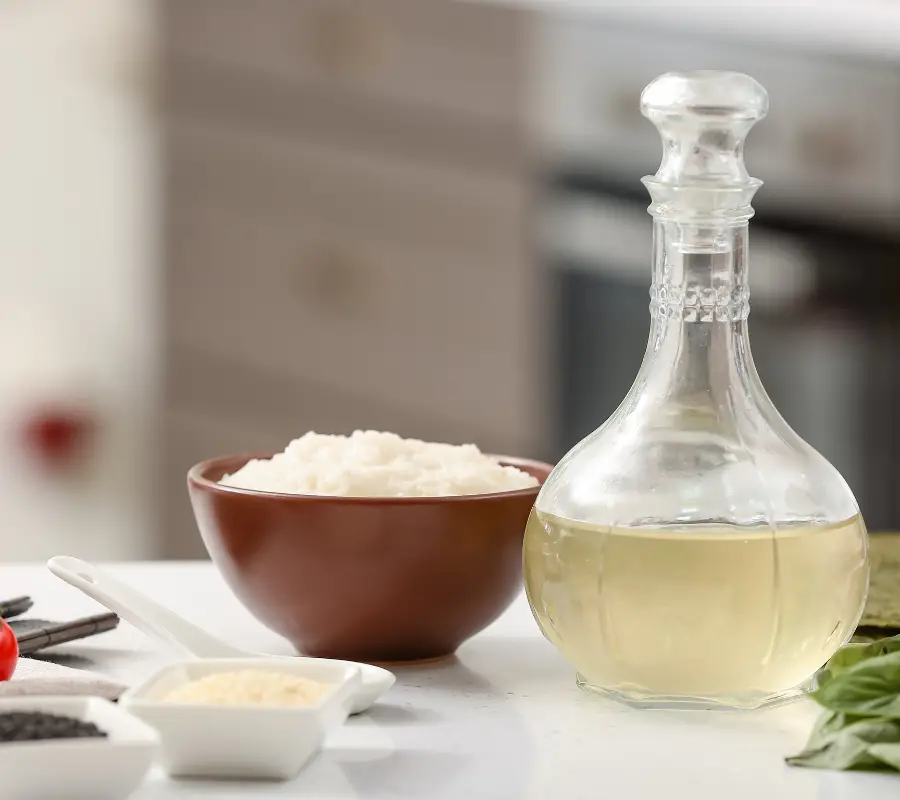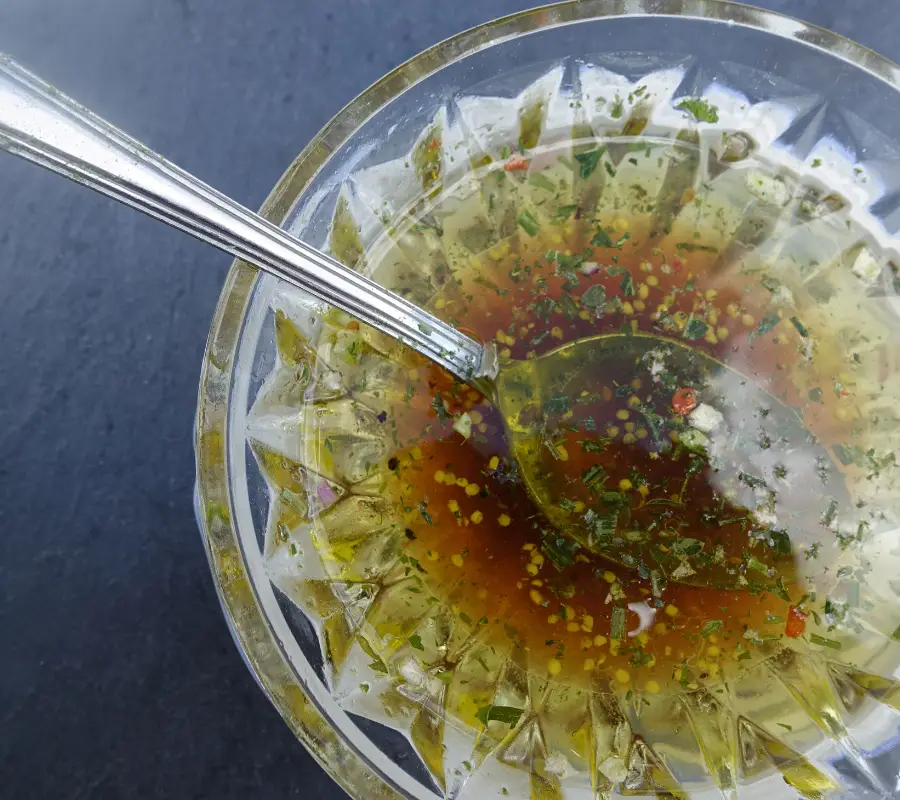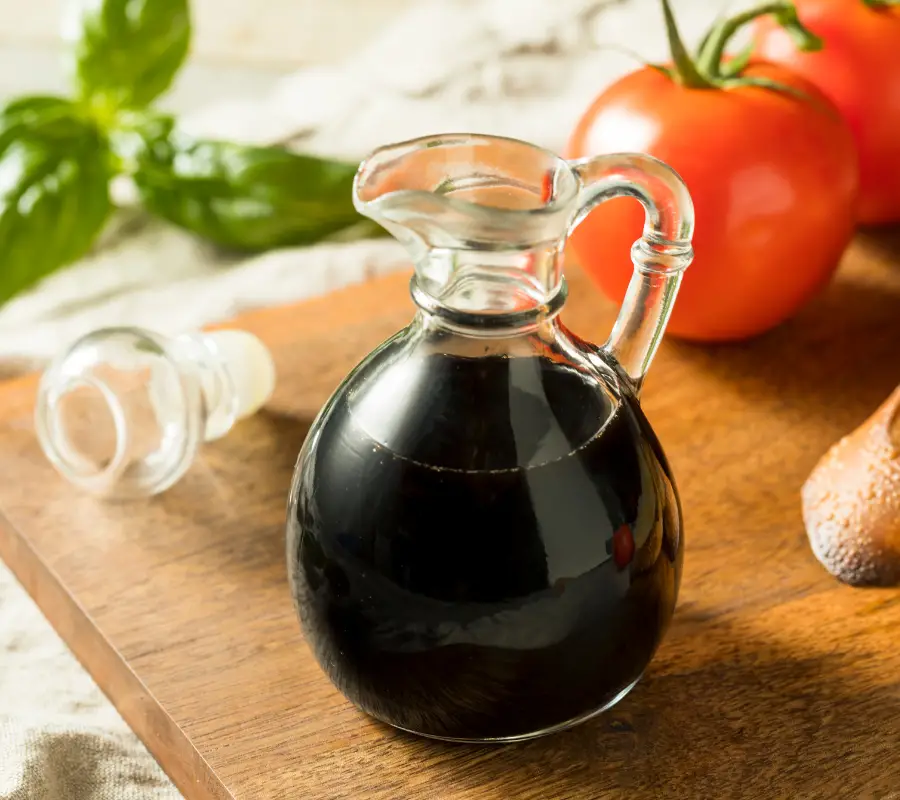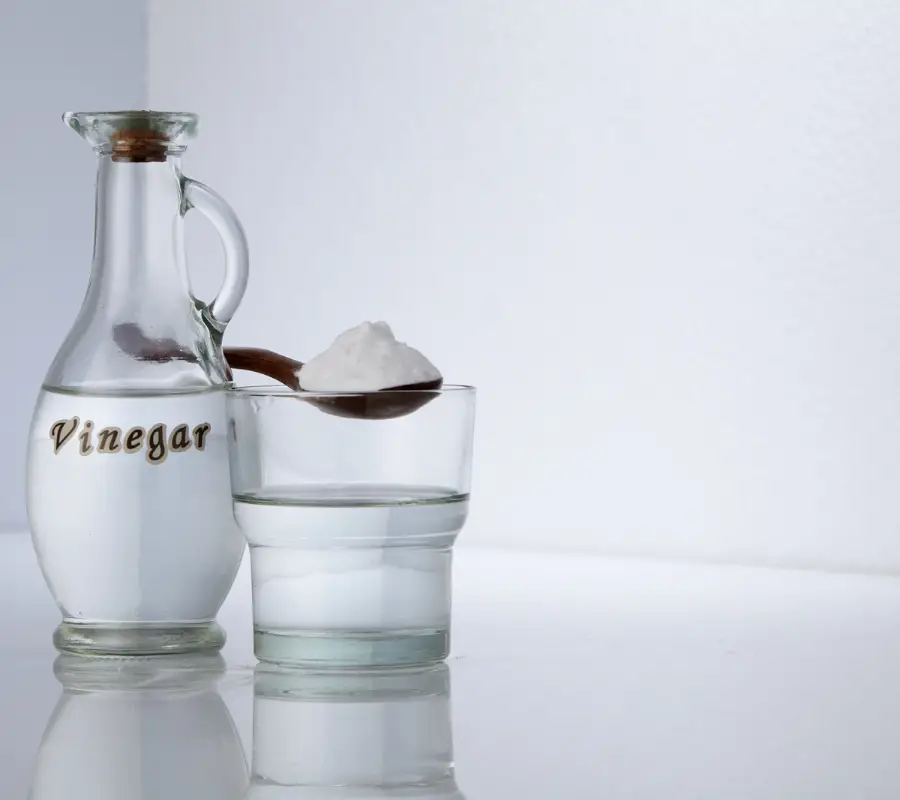15 Types Of Vinegar: Uses And Benefits
Have you ever wondered just what all those different kinds of vinegar are? Vinegar has been used in cooking and around the house for centuries, but with so many types of vinegar available today, it can be hard to decide which type is best for your particular situation.
Luckily, we’re here to help! In this article, we’ll explore 15 different types of vinegar uses and benefits, from cleaning tile grout to dressing salads. Not only will you learn about these versatile kitchen staples, but you’ll also find out how each type differs from another – both in flavour and application!
Understanding Vinegar
Fermentation
Vinegar is created through a fermentation process, which involves the conversion of sugars in a liquid into alcohol, followed by oxidation into acetic acid. During this process, a variety of organic compounds that give different types of vinegar their distinct flavours and aromas are produced. For example, rice vinegar is made from fermented rice or rice wine, while fermenting red grapes creates red wine vinegar into wine and then ultimately into vinegar.
Acetic Acid
The primary component of vinegar is acetic acid, which is responsible for its signature sour taste. Vinegar usually contains around 4-8% acetic acid, but concentrations can vary depending on the type, process used, and country of origin. Acetic acid also offers multiple health benefits, such as supporting weight loss, helping maintain blood sugar levels, and acting as a natural preservative.
Yeast
Yeast plays a crucial role in the initial stage of vinegar production, where it converts the sugars in the liquid into alcohol. It is a single-celled microorganism that belongs to the fungus family. Different types of yeast may be used depending on the type of vinegar being produced, as this can affect the final taste and aroma of the vinegar.
Bacteria
After the yeast has transformed the sugar into alcohol, bacteria come into play. Acetobacter and Gluconobacter are two common types of bacteria responsible for converting alcohol into acetic acid in the presence of oxygen. This process, known as acetous fermentation, is essential for vinegar production. The presence of these bacteria ensures that the vinegar contains not only acetic acid but also various beneficial compounds that give vinegar its unique properties.
The 15 Types of Vinegar
In this section, you’ll learn about the 15 types of vinegar, their uses, and their benefits. Each type of vinegar has unique characteristics and can be used in various applications.
1. Apple Cider Vinegar
Apple cider vinegar is made from fermented apple juice and is known for its tangy taste. It’s popular for its potential health benefits, such as aiding digestion and supporting weight loss. You can use it in salad dressings, marinades, and even as a natural cleaning agent.
Check it out >
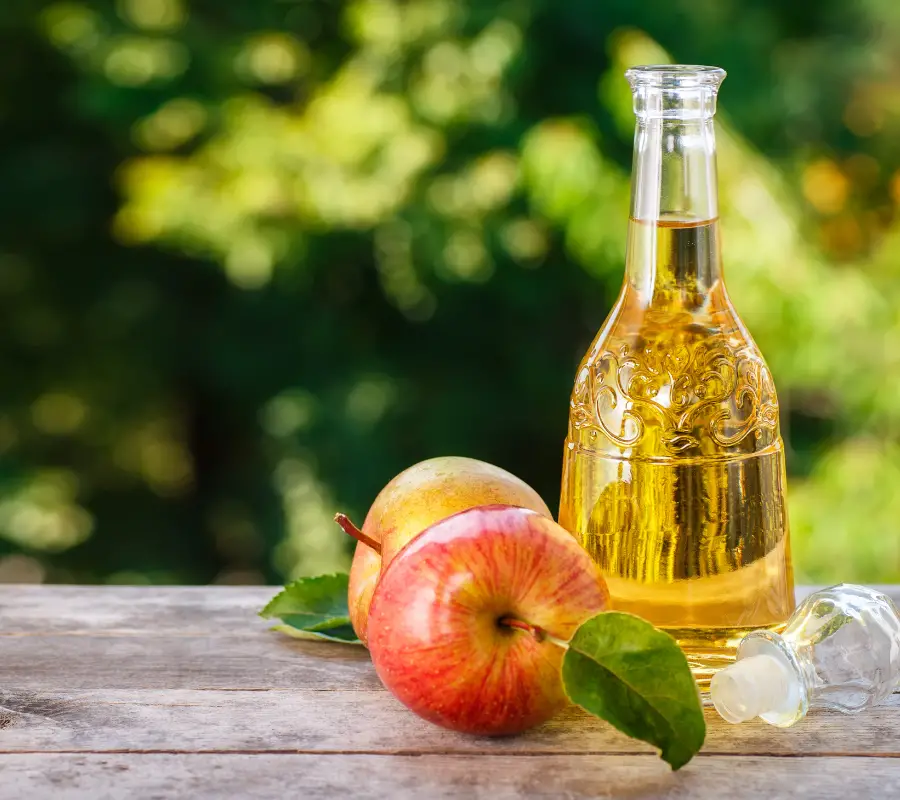
2. White Vinegar
White vinegar, also known as distilled vinegar but less purified, is a versatile staple found in many households. It’s made from fermented grain alcohol and has a strong, acidic flavour. You can use it for pickling, cleaning, and even as a weed killer in your garden.
Check it out >

3. Balsamic Vinegar
Balsamic vinegar is made from grape must and is aged in wooden barrels. It has a sweet, rich flavour, making it ideal for salad dressings, sauces, and glazes. Balsamic vinegar can also be drizzled over fruits and desserts for a unique flavour combination.
Check it out >
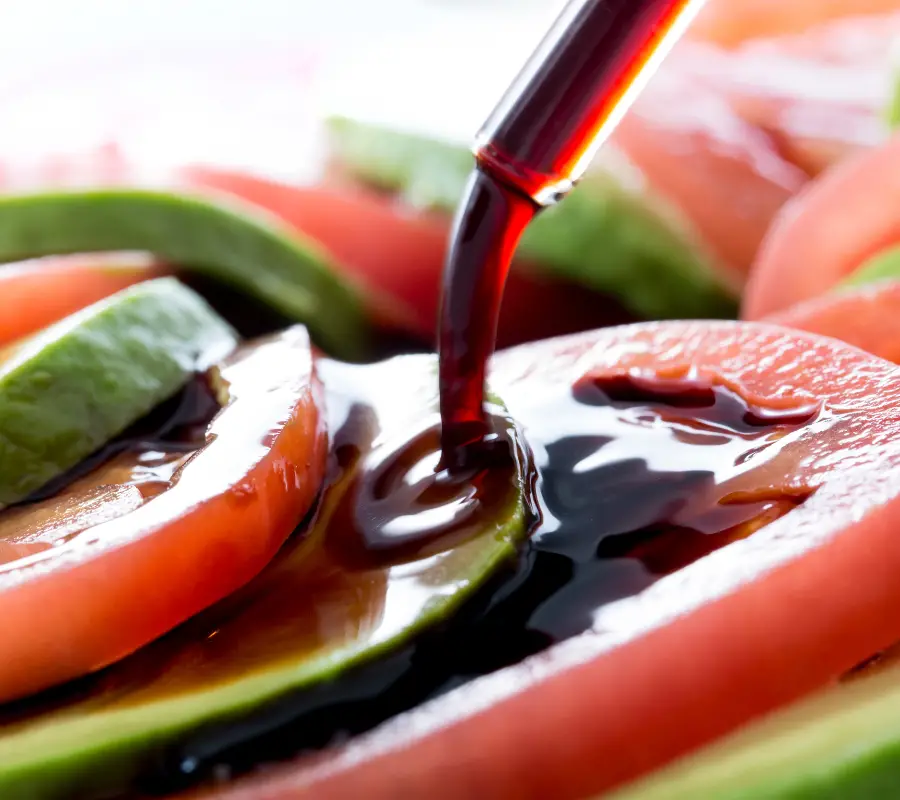
4. Red Wine Vinegar
Red wine vinegar is created from fermenting red wine. It has a bold, fruity taste, making it perfect for use in marinades, dressings, and sauces. The alcohol content in red wine vinegar is negligible, between 0.2% and 0.5%.
Check it out >
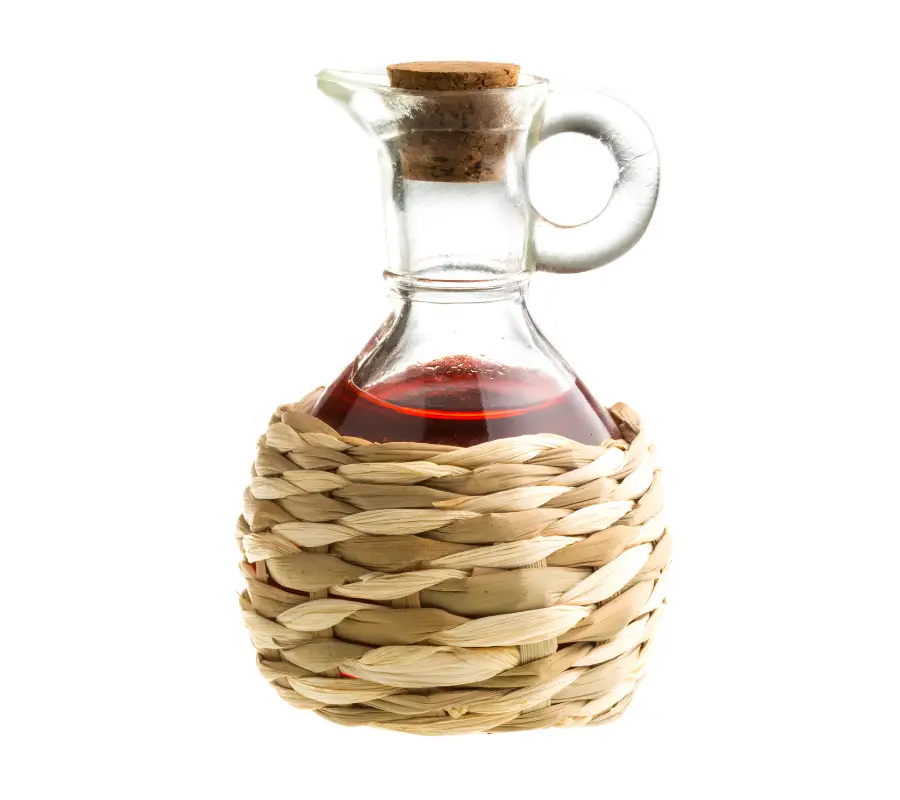
5. White Wine Vinegar
White wine vinegar, made from fermenting white wine, has a lighter, more delicate flavour than red wine vinegar. It’s excellent for use in dressings, marinades, and light sauces.
Check it out >
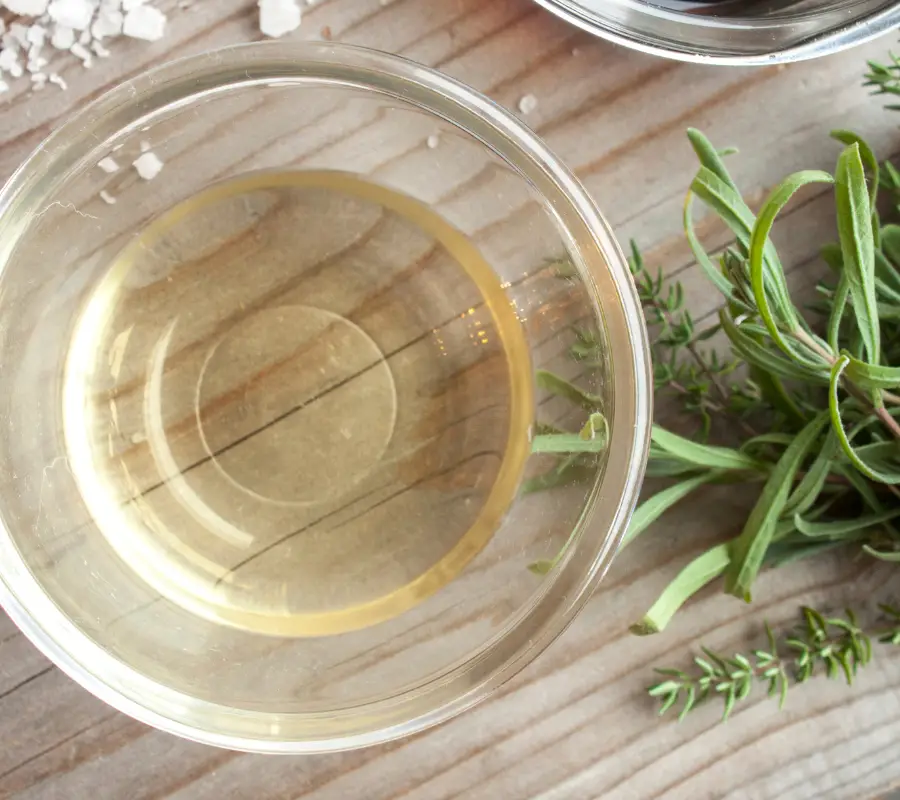
6. Rice Vinegar
Rice vinegar is made from fermented rice and has a mild, sweet taste. It’s a staple in Asian cuisine and is commonly used in stir-fries, dressings, and dipping sauces.
Check it out >
7. Malt Vinegar
Malt vinegar comes from fermented barley malt and has a strong, distinctive flavour. It’s popular in British cuisine, particularly for use with fish and chips.
Check it out >
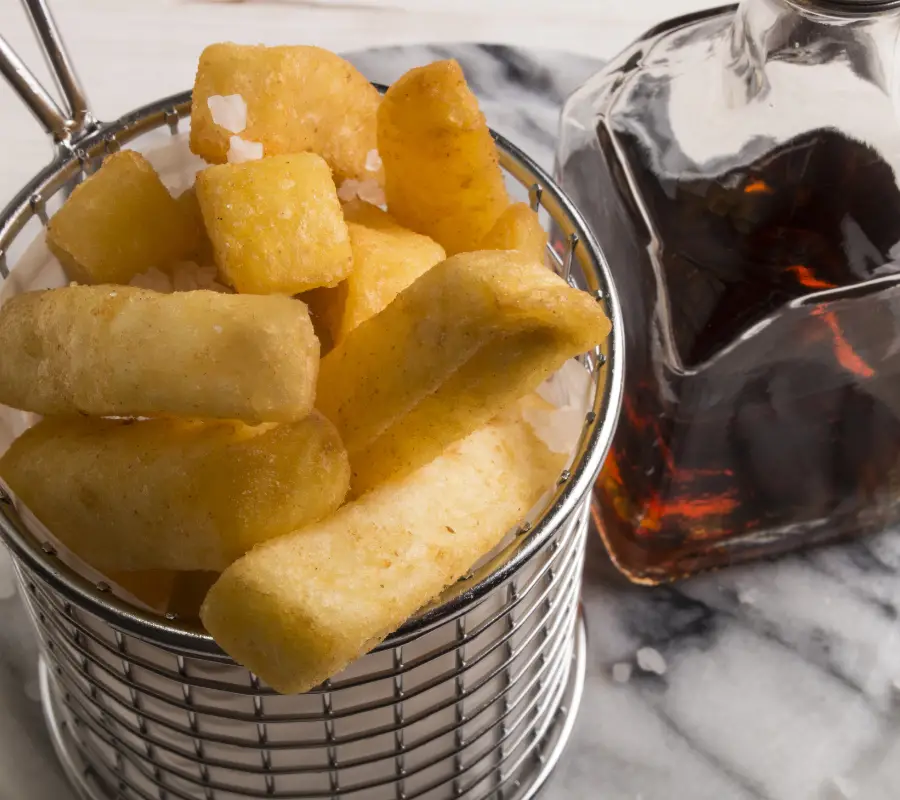
8. Champagne Vinegar
Champagne vinegar is a luxury vinegar made from fermented champagne. It has a light, crisp flavour, making it an excellent choice for delicate dressings and seafood dishes.
Check it out >
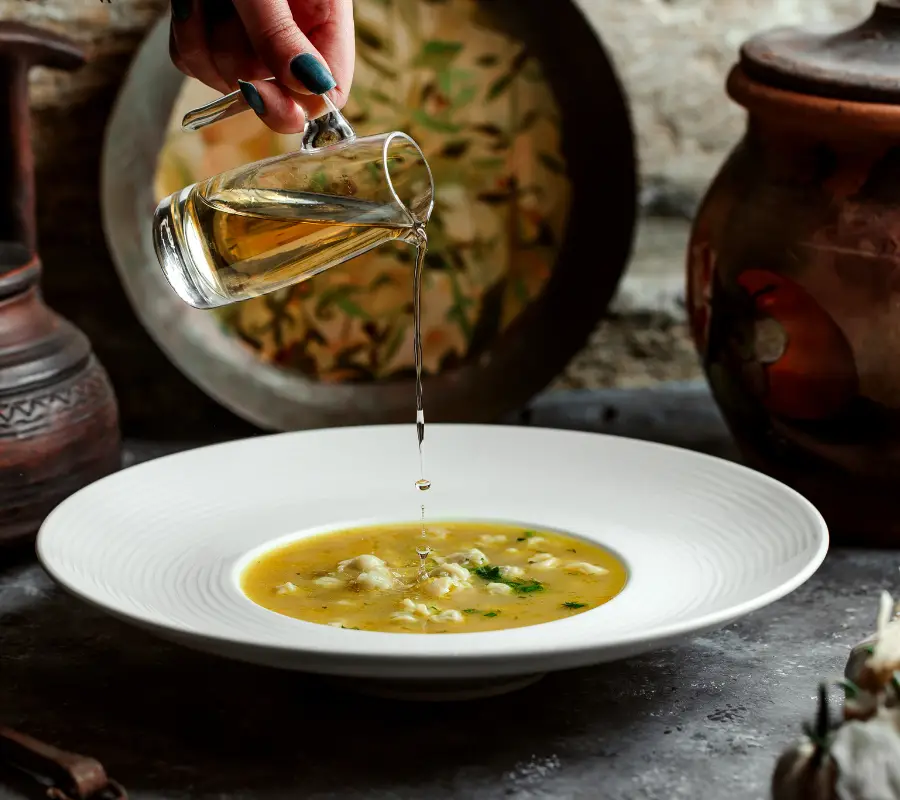
9. Sherry Vinegar
Sherry vinegar is produced from aged sherry wine in Spain. It has a robust, nutty flavour, making it a versatile ingredient for dressings, marinades, and sauces..
Check it out >
10. Cane Vinegar
Made from syrup extracted from crushed sugar cane, cane vinegar has a unique, unsweet flavour often compared to malt vinegar. It’s more common in countries where sugar cane is grown.
11. Grain Alcohol Vinegar
The grain alcohol vinegar is similar to white vinegar but is made from neutral grain alcohol, giving it a cleaner flavour. It is versatile and can be used in a variety of culinary applications.
12. Red Rice Vinegar
Red rice vinegar is produced from fermented red rice, giving it a deeper colour and richer flavour than regular rice vinegar. It’s used in various Asian dishes, particularly in dipping sauces and stir-fries.
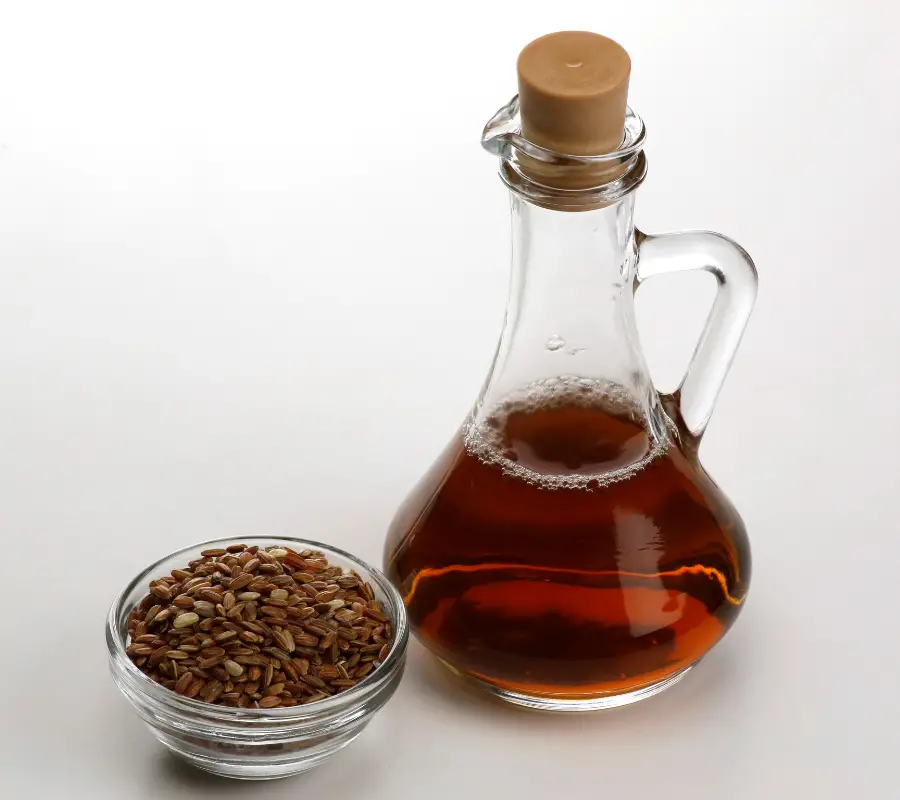
13. Black Vinegar
Black vinegar, also known as Chinese black vinegar, is made from fermented rice, wheat, millet, or sorghum. It has a dark colour and a complex, smoky flavour, making it ideal for use in braised dishes and sauces.
Check it out >
14. Beer Vinegar
Beer vinegar is made from fermented beer and has a unique, malty flavour. It can be used similarly to malt vinegar, adding a different taste profile to your dishes.
15. Distilled White Vinegar
Distilled white vinegar is essentially the same as white vinegar but is further purified through distillation. This process results in a clearer liquid with higher acidity, making it ideal for cleaning and pickling applications.
Check it out >
Experiment with these various types of vinegar in your cooking, and discover their distinct characteristics and applications. Enhance the flavours of your favourite dishes and reap the potential health benefits these versatile ingredients have to offer.
Culinary Uses of Vinegar
Salad Dressings and Vinaigrettes
Vinegar is an essential ingredient in salad dressings and vinaigrettes. Its tangy taste adds a unique flavour profile that enhances the taste of your greens. Some popular types of vinegar used in dressings include apple cider vinegar, red wine vinegar, and balsamic vinegar. When mixed with oils and herbs, these vinegar create well-balanced dressings that can elevate your salad.
To make a simple vinaigrette, combine three-parts oil with one-part vinegar, then season with salt and pepper. Experiment with different kinds of vinegar to find your preferred taste.
Marinades
Vinegar works great in marinades by tenderising meats and enhancing their flavours. Its acidity helps break down proteins, facilitating the penetration of flavours into the meat. Most types of vinegar, particularly apple cider, rice, and cane vinegar, can be used in marinades for different meats and vegetables.
When creating a marinade, mix vinegar with oil, herbs, spices, and sometimes sugar to balance the acidity. For best results, marinate your meat or vegetables for a few hours or even overnight.
Pickling
Preserving fruits and vegetables is a breeze with vinegar. Pickling involves submerging fruits and vegetables in a brine made of vinegar, water, salt, and sometimes sugar. This preserves the food and gives it a tangy, lasting flavour. White vinegar or cane vinegar are commonly used for pickling due to their neutral flavour profiles.
To start pickling, prepare a brine by boiling equal parts vinegar and water with salt and sugar. Allow it to cool before pouring it over your chosen fruits or vegetables in a sterilised jar. Seal and refrigerate for at least a week to develop the pickled flavour.
Sauces
Vinegar helps create delightful sauces by adding a tangy, flavourful kick. Its versatility lets you use it in a variety of cuisines, from Asian to Mediterranean dishes. Examples of sauces using vinegar include Chinese black vinegar-based sauces, vinaigrettes for drizzling over vegetables, or traditional British malt vinegar as a condiment for fish and chips.
To create your vinegar-infused sauce, experiment with different types and amounts until you achieve your desired taste. Remember to balance the acidity with other ingredients like sugar, oil, and spices.
Vinegar’s Role in Popular Cuisines
In various cuisines worldwide, vinegar plays an essential role as a seasoning and flavour enhancer. Here, you’ll discover how different vinegar types contribute to popular dishes and sauces.
In Asian cuisine, rice vinegar is a must-have ingredient. Loved for its mild and delicate flavour, it is a key component in making sushi rice. Additionally, rice vinegar enhances the taste of many Chinese dishes, such as stir-fries and dipping sauces. Try red rice vinegar for a unique twist to your dish.
In Mediterranean cooking, you’ll find red and white wine vinegars used in a variety of ways. From simple salad dressings to mouth-watering marinades for meats, these vinegars bring out rich and robust flavours in your dishes. A famous example is Italian Balsamic vinegar, which is renowned for its sweet, tangy taste, perfect for drizzling over salads, vegetables, and even desserts.
For a taste of France, you can explore the world of apple cider vinegar. Commonly used in French salad dressings, it provides a subtle fruity and tart flavour that complements other ingredients. Consider mixing in a bit of honey or mustard for a well-rounded taste.
Moving on to the Americas, you might be surprised to find that vinegar is a key ingredient in traditional Mexican cuisine. A popular example is cane vinegar, derived from sugar cane, which imparts a unique flavour, often compared to malt vinegar. From pickling vegetables to adding a tangy twist to your favourite salsa, this type of vinegar is truly versatile.
In British cuisine, malt vinegar shines as the iconic accompaniment for fish and chips. Its tangy, assertive taste pairs perfectly with the saltiness of your deep-fried favourites. You can also use malt vinegar for pickling onions or adding a lively touch to soups and stews.
Ultimately, vinegar’s diverse flavour profiles make it an essential addition to your pantry. Do experiment with various types to elevate your cooking and enhance the taste of each dish you create.
Health Benefits of Vinegar
Weight Loss
Incorporating vinegar into your diet may aid in weight loss. The acetic acid in vinegar may help suppress your appetite and increase your metabolism, making it easier for you to burn calories. For example, consuming a small amount of apple cider vinegar before meals may help you feel more satisfied, leading to a lower overall calorie intake. Remember to consume it in moderation, as excessive intake might cause digestive issues.
Blood Sugar Control
Vinegar may help with blood sugar control, particularly for individuals with type 2 diabetes or insulin resistance. Studies have shown that consuming vinegar with high-carb meals can reduce blood sugar spikes and improve insulin sensitivity. Try adding a splash of vinegar to your salad dressing or mix it with your favourite dipping sauce to incorporate it into your meals.
Cholesterol and Triglycerides
Incorporating vinegar into your diet may help to improve your cholesterol and triglyceride levels. Research suggests that the antioxidants present in vinegar, particularly apple cider vinegar, can help prevent the oxidation of LDL cholesterol, reducing the risk of plaque formation in your arteries. To reap the benefits, consider incorporating different types of vinegar into your cooking.
Blood Pressure
Another potential benefit of vinegar is its ability to help manage blood pressure. Some animal studies have indicated that vinegar may help prevent high blood pressure, although more research is needed to confirm these effects in humans. It’s important to note that vinegar is not a substitute for prescribed medications, but incorporating it into your diet might be a helpful addition to your blood pressure management plan.
Gut Health
Vinegar, particularly apple cider vinegar and other fermented varieties, contains beneficial probiotics and enzymes that promote gut health. These probiotics can help improve digestion and support a healthy balance of gut bacteria. To incorporate vinegar into your gut health routine, try swapping out your usual condiments like ketchup or mayo for vinegar-based alternatives, such as salad dressings or pickled vegetables.
Remember, while vinegar offers numerous health benefits, it’s essential to consume it in moderation and as part of a balanced diet. Always consult with your healthcare professional before making any significant dietary changes, especially if you have existing health conditions or concerns.
Home Remedies Using Vinegar
Acid Reflux Relief
If you suffer from acid reflux, you might find relief with the help of vinegar. While this might sound counter-intuitive, apple cider vinegar is known to help balance your stomach’s pH levels by neutralising stomach acid. To create a simple remedy, mix one teaspoon of apple cider vinegar with a glass of water and drink it before meals. However, if you have severe acid reflux or gastroesophageal reflux disease (GERD), it is recommended to consult your doctor before trying this remedy.
Dandruff Treatment
Vinegar, particularly apple cider vinegar, can be an effective home remedy for treating dandruff. The acetic acid in the vinegar helps maintain the pH balance of your scalp, which in turn can keep dandruff at bay. To use vinegar as a dandruff treatment, follow these steps:
- Mix equal parts water and apple cider vinegar in a spray bottle.
- Apply the solution to your scalp and massage it gently.
- Leave it on for 15-20 minutes before rinsing it off with water.
Repeat this treatment once or twice a week for best results.
Product Buildup Removal
Vinegar is a helpful natural product for removing buildup from your hair caused by styling products or hard water. The acetic acid in vinegar helps to break down buildup and leaves your hair feeling clean and refreshed. Here’s a quick guide for using vinegar as a hair rinse:
- Mix one part vinegar (white or apple cider) with three parts water.
- After shampooing your hair, pour the vinegar solution on your hair, making sure to cover your scalp and the full length of your hair.
- Let it sit for a few minutes before rinsing it out thoroughly.
Use this hair rinse once every 1-2 weeks to keep your hair free of product buildup and looking its best.
